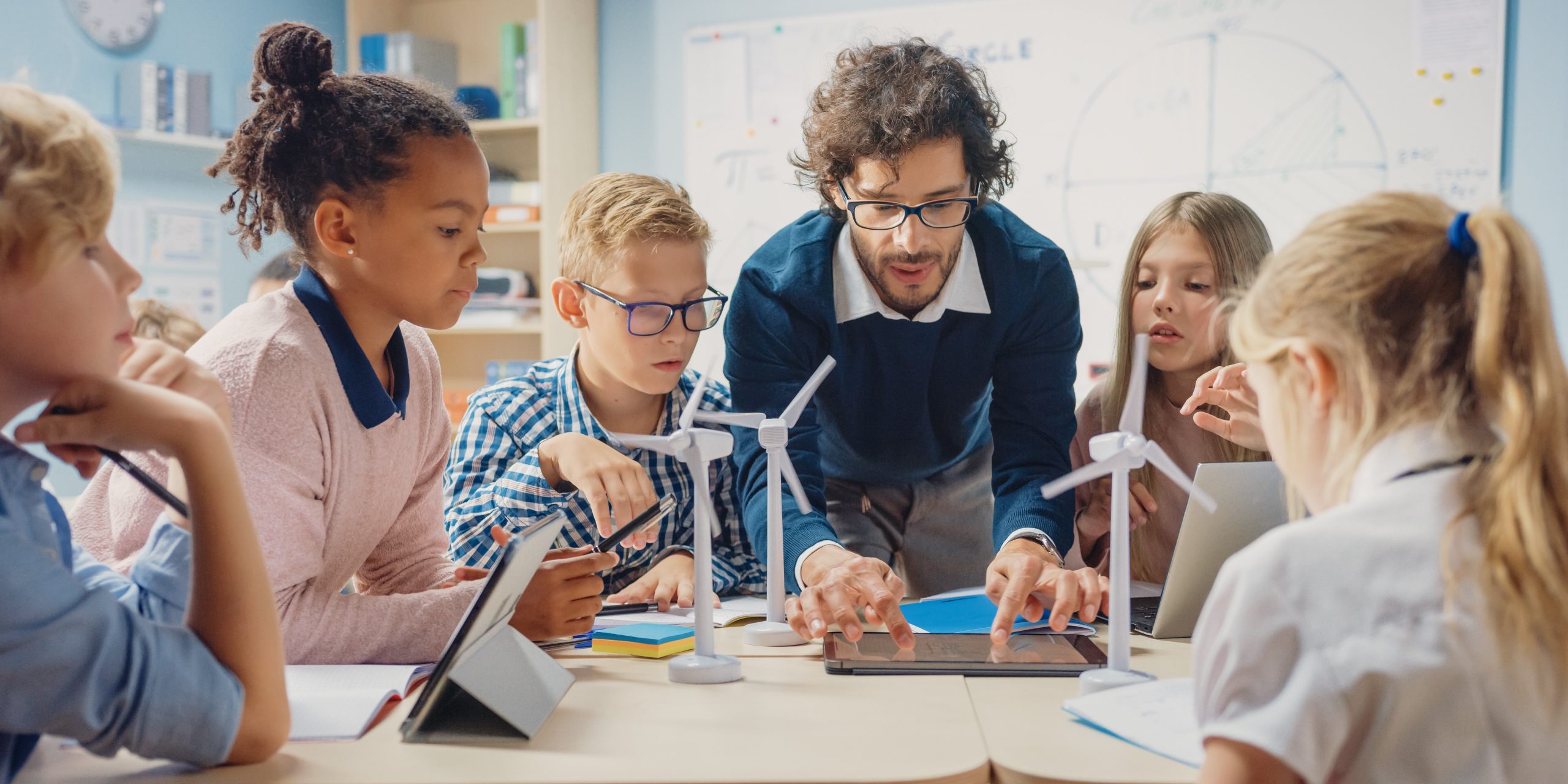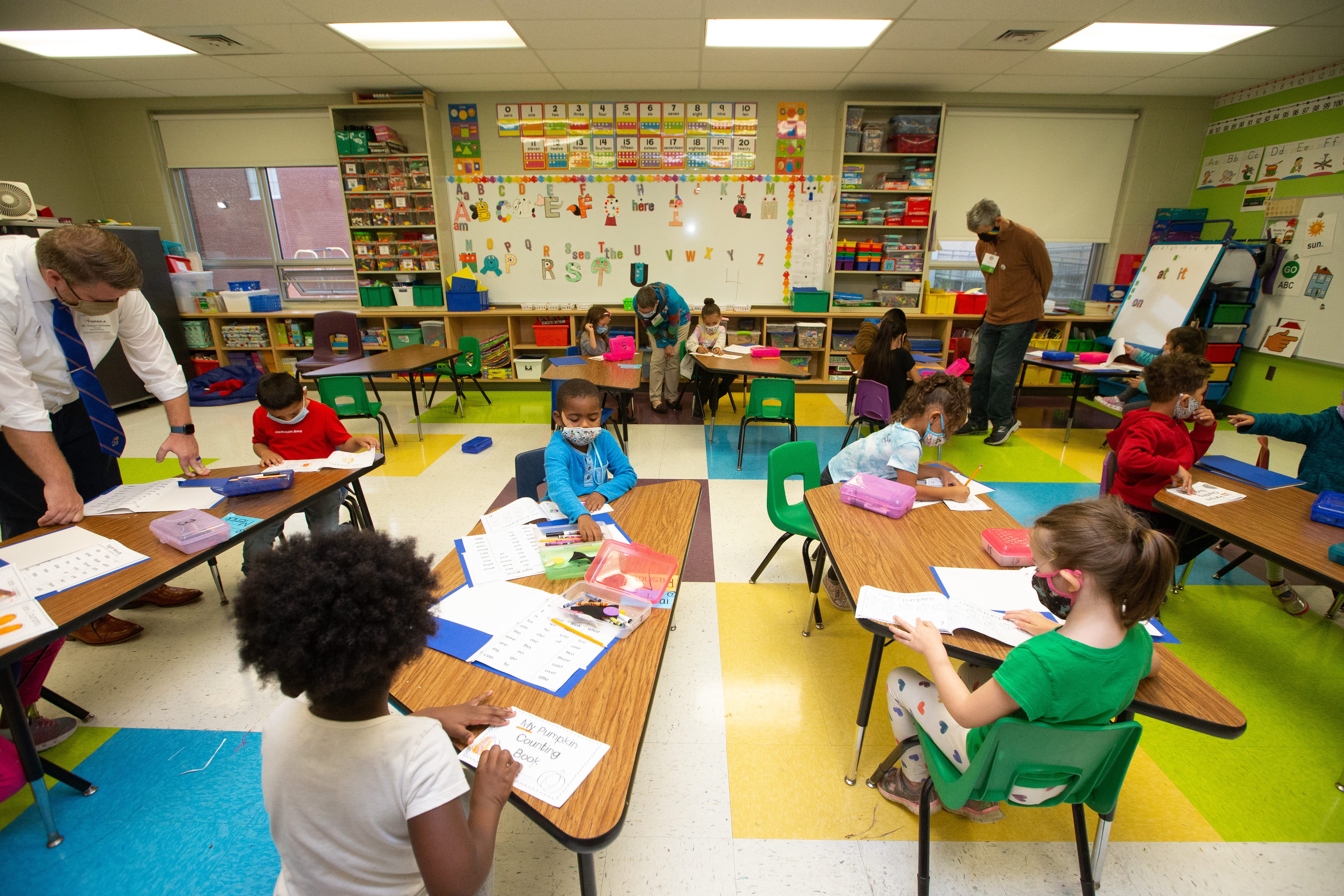Achieve Academic Success with Primary Science Tuition Singapore
Achieve Academic Success with Primary Science Tuition Singapore
Blog Article
A Comprehensive Guide to the Numerous Understanding Techniques in Key Scientific Research Instruction
The exploration of varied learning techniques in key scientific research direction presents a chance for instructors to enhance trainee interaction and understanding substantially. By checking out hands-on knowing methods, inquiry-based techniques, and collaborative strategies, we can recognize reliable methods that accommodate different learning styles. In addition, the integration of modern technology and separated direction plays a crucial role in cultivating an inclusive environment. Nevertheless, the concern continues to be: exactly how can these approaches be effectively implemented in the class to maximize their impact? The answer lies in a better analysis of each strategy and its implications for teaching science.

Hands-On Understanding Techniques
Hands-on understanding techniques play an essential duty in main science guideline, involving pupils in energetic exploration and trial and error. These approaches permit students to communicate directly with sensations and products, fostering a much deeper understanding of clinical ideas. By utilizing manipulatives, versions, and real-life experiments, instructors develop an environment where pupils can observe, assume, and examine their ideas.
Such strategies not just boost understanding yet likewise grow critical thinking and analytical skills. When trainees take part in activities like constructing simple makers, growing seeds, or carrying out chain reactions, they are encouraged to ask inquiries and look for answers via their very own observations. This experiential strategy aids to debunk intricate scientific concepts, making them a lot more accessible and relatable.
Moreover, hands-on discovering advertises partnership among peers, as students commonly function in groups to carry out experiments or share searchings for. This team effort not just improves their discovering experience however also establishes vital social skills. Inevitably, integrating hands-on techniques in primary scientific research guideline fosters a long-lasting love of learning and inquisitiveness concerning the environment, laying a strong foundation for future scholastic quests in science and past.
Inquiry-Based Discovering
Inquiry-based discovering is a training technique that urges trainees to ask concerns, check out phenomena, and construct their very own understanding of clinical ideas. This technique shifts the emphasis from standard teacher-led direction to a more student-centered experience, where learners take the campaign in their instructional journey. By fostering curiosity, inquiry-based learning promotes much deeper involvement with the product, allowing pupils to check out topics in a purposeful context.
In method, this technique frequently includes hands-on experiments, monitorings, and vital reasoning activities that straighten very closely with the scientific approach. Students are urged to formulate theories, design examinations, and evaluate data, which grows vital abilities such as analytic and analytical thinking. The function of the instructor in this framework is to promote expedition, directing pupils through the questions process while urging independent idea and partnership.
Moreover, inquiry-based understanding supports a sense of ownership over the understanding procedure, inspiring trainees to pursue knowledge actively. This technique not just boosts understanding of scientific ideas but additionally promotes a long-lasting love for knowing, furnishing students with the abilities necessary to browse a significantly complicated world.
Collaborative Discovering Approaches
Joint discovering strategies equip trainees to participate in meaningful communications with peers, fostering a common responsibility for their educational outcomes. In main scientific research instruction, these strategies urge students to interact to explore scientific concepts, resolve troubles, and perform experiments (primary science tuition Singapore). By joining group activities, trainees can take advantage of varied point of views, permitting for richer understanding and retention of scientific understanding
One secret aspect of joint discovering is the focus on interaction skills. Students should articulate their ideas, pay attention actively to others, and negotiate ideas, all of which are important expertises in both academic and real-world contexts. This social communication not only boosts their understanding of clinical principles but additionally promotes team effort and problem resolution abilities.
Furthermore, collective knowing frequently leads to boosted her comment is here inspiration and involvement. When trainees see the value of their payments within a team, they are extra likely to take ownership of their learning journey. Teachers can facilitate this process by creating structured team jobs that straighten with educational program goals while supplying guidance on effective partnership techniques. In general, incorporating collaborative knowing methods in primary science direction grows a vibrant discovering environment that prepares students for future academic and social obstacles.
Modern Technology Assimilation in Scientific Research
The combination of modern technology in key science direction boosts learning experiences by offering ingenious devices and sources that support different mentor see this here techniques, including collective discovering - primary science tuition Singapore. Using digital platforms, simulations, and interactive applications enables pupils to involve deeply with clinical principles, helping with a much more hands-on strategy to learning
Virtual labs, for example, make it possible for students to conduct experiments safely and efficiently, promoting inquiry-based knowing. These tools can mimic real-world scientific situations, enabling students to imagine complicated processes that would be difficult to duplicate in a standard class setting. Moreover, modern technology fosters communication and partnership among students, as they can share searchings for and work together on jobs via online platforms.
Additionally, multimedia discussions and academic videos can improve lessons by catering to diverse understanding styles, making abstract concepts extra obtainable. Data analysis devices likewise empower pupils to collect and analyze scientific information, strengthening vital thinking abilities. In general, the critical consolidation of modern technology in main scientific research direction not just improves involvement but additionally prepares students for a highly advanced culture, outfitting them with vital abilities for future scientific undertakings.
Separated Guideline Methods
Set apart direction approaches are vital for addressing the diverse demands of learners in main scientific research education. These methods make it possible for teachers to customize their training methods to fit differing abilities, rate of interests, and discovering designs within the classroom. By utilizing separated instruction, instructors can develop an inclusive atmosphere that promotes involvement and enhances understanding of scientific ideas.
One reliable technique is to utilize flexible grouping, which permits pupils to work together with peers at similar skill levels or with differing viewpoints. This approach encourages peer knowing and promotes important reasoning. In addition, offering options in jobs can equip trainees, enabling them read this article to select projects that reverberate with their passions while still fulfilling curricular goals.
Additionally, integrating tiered projects is another valuable strategy. By making jobs with varying levels of intricacy, teachers can guarantee that all students are appropriately tested, no matter of their proficiency. Utilizing formative analyses to determine recognizing more allows teachers to readjust their training techniques dynamically, guaranteeing that each learner receives the assistance they require.
Ultimately, executing differentiated guideline methods in main science education and learning not only boosts trainee learning results but additionally grows a passion for scientific research, preparing students for future scholastic pursuits.

Verdict
In summary, efficient main scientific research guideline necessitates a diverse technique that incorporates hands-on learning, inquiry-based methods, and collective strategies. The assimilation of modern technology and distinguished direction additionally provides to varied understanding styles, fostering an environment conducive to exploration and vital thinking.
The exploration of diverse knowing techniques in key scientific research guideline offers a possibility for instructors to improve pupil interaction and comprehension substantially.Hands-on discovering methods play an essential duty in key science instruction, engaging students in active exploration and experimentation.Inquiry-based discovering is a training method that encourages students to ask inquiries, explore sensations, and build their own understanding of scientific concepts.Joint discovering methods equip students to involve in significant interactions with peers, cultivating a common obligation for their academic outcomes. On the whole, including collective learning strategies in key science instruction grows a dynamic understanding atmosphere that prepares pupils for future academic and social challenges.
Report this page